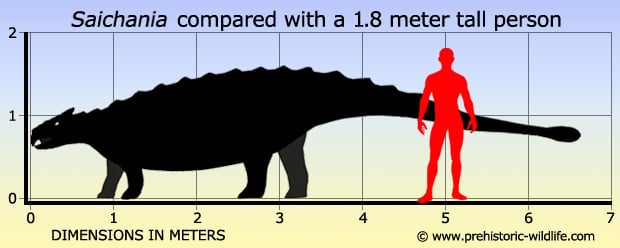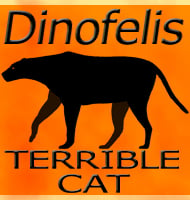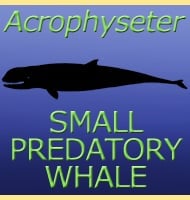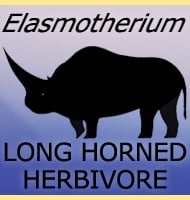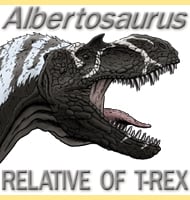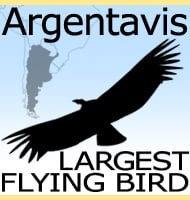In Depth
At over six meters long Saichania is one of the larger known ankylosaurids, although in terms of size it would probably be eclipsed by the larger Tarchia which is also known from the same formation, and was actually described at the same time as Saichania. The actual meaning of the name Saichania (beautiful one) is based upon the condition of the holotype fossils that were recovered in a high state of preservation.
One feature of interest about Saichania is the hard palate in the mouth (if you touch the tip of your tongue to the roof your mouth you feel that it is hard, this is your palate). Hard palates are virtually unknown in dinosaurs as a group, but they have been documented in other ankylosaurid dinosaurs like Euoplocephalus, which suggest that as a group the ankylosaurids dinosaurs were quite well developed. This means that Saichania would be able to breathe while its mouth was full of plants; as such Saichania could afford to spend more time processing food with up and down jaw movements to allow for much more efficient digestion. Also Mongolia during the Late Cretaceous was covered by vast areas of arid landscape, the plants of which would have been tougher and requiring more digestion than the soft vegetation of wetlands.
While the hard palate would have helped in the above respect, it would have also made it easier for Saichania to breathe through the network of air passages that were present in the snout. Earlier nodosaurids (thought to be the group the ankylosaurids are descended from) like Nodosaurus had simple passages that ran straight from the nostrils to the windpipe, so it seems strange that the ankylosaurids should develop such a system, at least until you consider the environmental effects of where they lived. Asian ankylosaurids would have lived in environments that were almost always arid, and as such dry. Breathing in dry air can dry out the lungs, causing an increased amount of moisture to be lost through respiration, and prolonged exposure can even trigger respiratory ailments as well. But having breathed in air that passed through a network of passages first, the air becomes moistened in the snout, significantly reducing the amount of moisture lost. Additionally breathing through the nose itself also greatly reduces the amount of water lost as to what would happen if breathing was through the mouth, and is why survival experts will tell you to breathe through your nose and not your mouth if you are ever stuck in the desert.
Altogether the features of Saichania have helped reveal how well adapted to dry environments that the ankylosaurids were. Also while North American ankylosaurids lived in a greater variety of environments, they still possessed these adaptations, perhaps to better cope with seasonal wet and dry periods. Evidence for this can actually be found associated with the nodosaurid Edmontonia, as nearby petrified tree trunks have growth rings that correspond with extended wet and dry periods.
The top of the skull of Saichania is covered in bulbous growths, a feature it shares not only with Tarchia but the North American Nodocephalosaurus as well. This hints at a common ancestry between these three ankylosaurid genera.
Further Reading
– Ankylosauridae (Dinosauria) from Mongolia – Palaeontologia Polonica 37:85-151 – Teresa Maryańska – 1977. – A new method to calculate allometric length-mass relationships of dinosaurs. – Journal of Vertebrate Paleontology, 21(1): 51–60 – F. Seebacher – 2001.
